History of the Campus - Buda Campus - EN
History of the Campus
History of Buda Campus
Last modified: 19. October 2022
The history of the Buda Campus began with the Practical Training Institute for Gardeners, which Ferenc Entz (1805-1877), a doctor of the War of Independence, established in 1853. The teaching plan organized the subjects into three groups: theoretical (botany, zoology, physics, chemistry, horticulture, plant breeding, etc.), practical combined with theory (e.g. determination of plant species and fruit varieties, processing methods, packaging) and purely practical (kitchen garden, fruit growing and herbs, as well as the cultivation of grapes) for occupations. From the beginning, the central idea of the school of Ferenc Entz, originally a doctor, was that the cultivation of horticultural plants can only be successful if the knowledge of the specialists is based on reliable, theoretical natural science foundations.
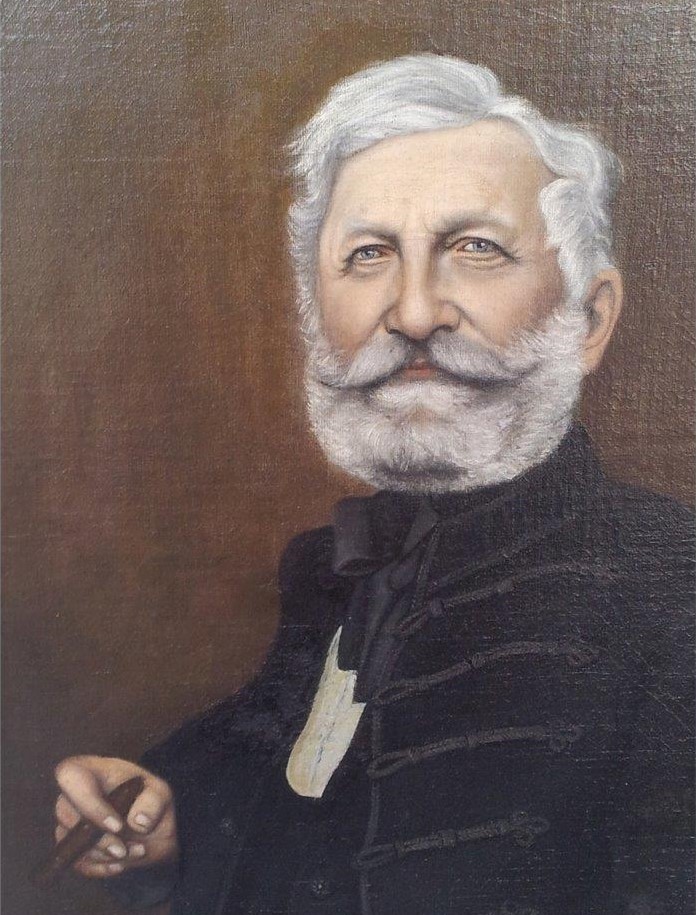
Ferenc Entz (1805-1877)
Gusztáv Geday writes: "If we look at the history of Hungarian horticulture and viticulture, the work of Ferenc Entz stands out as a historical milestone in the 19th century. What was before him, the past, what began with him, is modern Hungarian horticulture." With him, the age of superstition ends, and based on his medical knowledge, horticulture based on natural science begins with him.
Ferenc Entz's school moved to Buda, on the southern slope of Gellért Hill, in the sixth year after its foundation, where it rose to university status from 1968 through continuous development, and is still home to higher education courses in horticulture, food science and landscape architecture. The Gellért Hill area was previously owned by Ferenc Schams, who developed his collection of grape varieties here. After his death, he bequeathed his lands to the National Hungarian Economic Association (OMGE), which organization wanted to implement its old plan with this opportunity: to create organized training for the development of Hungarian horticulture and viticulture. Considering that the private school founded by Entz was less and less able to satisfy the increased demands for its training, the founder accepted the invitation and moved his school to the side of Gellért Hill. This is how he became the director of the institution, which was renamed the Vocational Training Institute for Vintners and Gardeners, and the education of viticulture and winemaking became more prominent in its training program. The first building of the campus, today's 'E' building (1860), was built based on the plans of the Buda architect Ignác Knabe.
After nine years, the word "gardener" was removed from the school's name, and the name of the institution maintained by OMGE was changed to the Buda Winery and Cellar Master Training Institute. From 1869, Ferenc Entz undertook the editing of the journal Borászati Füzetek. He was finally forced to resign as director in 1876 due to his deteriorating health. He unfortunately passed away just a year later, but his work in the field of the development of Hungarian horticulture and horticultural education created value that remains to this day. Ferenc Entz testified about the background of his school-creating work: "I started my horticulture educational institute so that I wouldn't grow old in it, or so that if my car on the way to my destination were to turn over, it would never get stuck in my path when I turned around. Let the head of the paradox break on the strength of the fresh rocks that keep growing under my hands!” During his activities as a school founder and director, he trained 150 excellent professionals, and the school he founded is still operating today!
István Molnár Rudinai became the new director, who led the institution for 20 years. His professional activity is characterized by the fact that he successfully worked to prevent serious losses caused by the phylloxera disease that appeared at that time. He took special care to ensure that the new knowledge developed throughout Europe was immediately included in the training of professionals skilled in the management of orchards planted in place of exterminated vines. In 1880, the OMGE transferred the school to state management, which continued to operate under the name Budapest Royal Hungarian State Academy of Vincellers until 1894. At that time, the education period was extended to three years following the one- or two-year internship, and the name of the institution was changed to the Hungarian Royal Institute of Horticulture. The creation of the Arboretum, one of the most important locations for practical education, began in 1893, when Károly Räde, a native of Saxony, was asked to head the ornamental horticulture department and assumed the position of head gardener of the institute. The second and third buildings of the school, today's 'F' and 'D' buildings, were handed over in the same year.
The oldest part of the Buda Arboretum is the three-hectare area surrounding the existing buildings, where under the leadership of Räde, the creation of the collection garden began with the planting of 1,000 types of trees and shrubs, as well as 90 perennial ornamental plants. As is typical for the era, in this period the plants were planted in a systematic grouping, but in a landscape arrangement, which can be traced in the Upper Garden to this day. The first transplanted specimens are still growing in their full glory today, nearly 130 years later: in this area, for example, Hungary's oldest Persian tree (Parrotia persica) and Lebanese oak (Quercus libani) live.
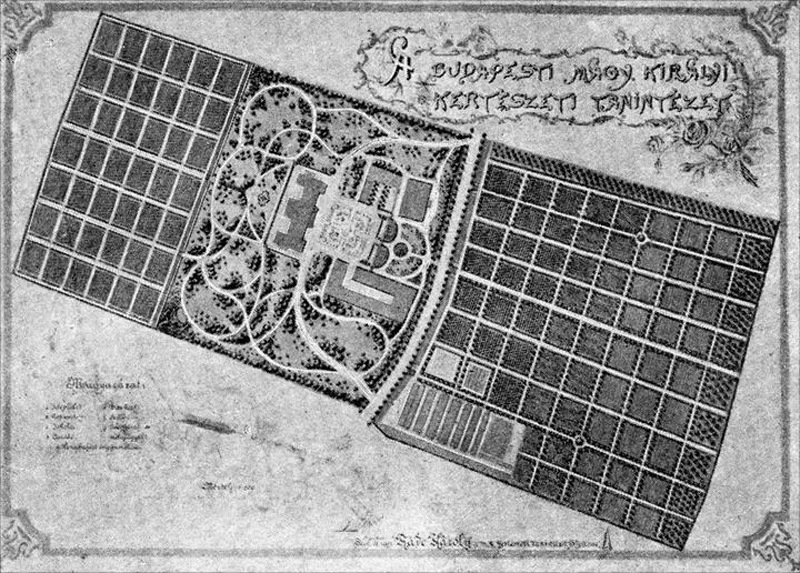
Map of the Hungarian Royal Institute of Horticulture
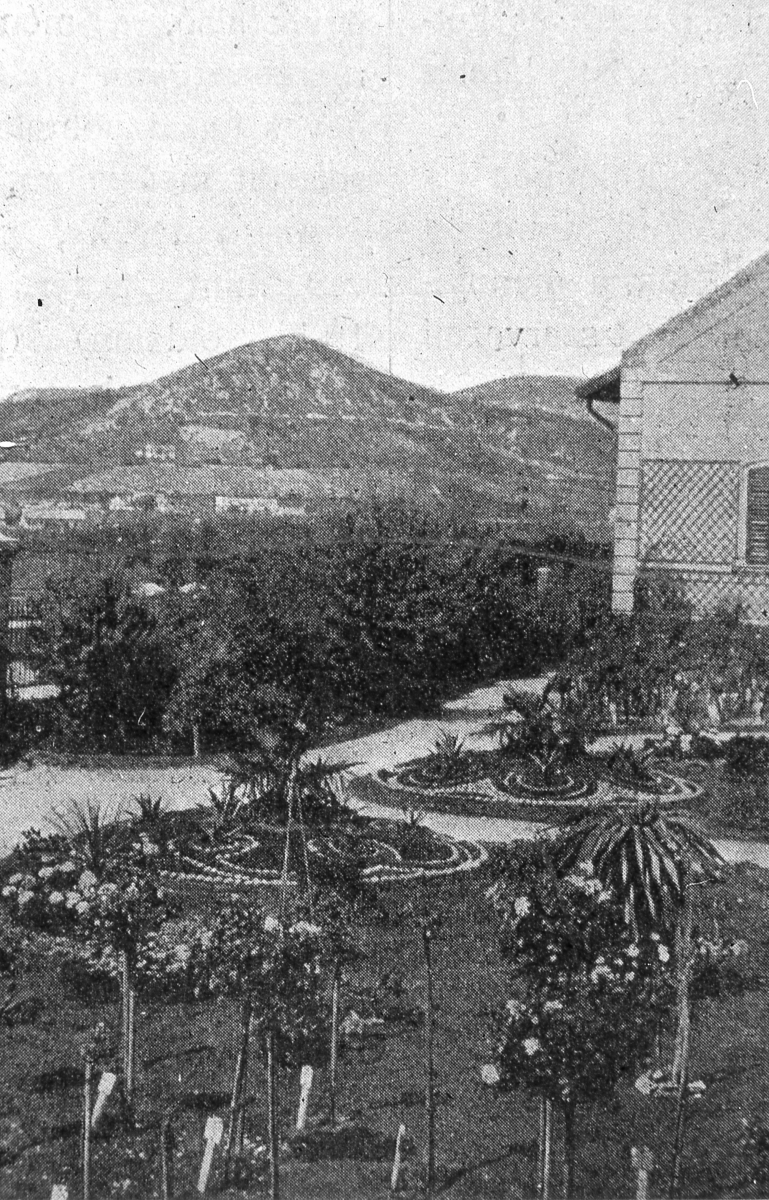
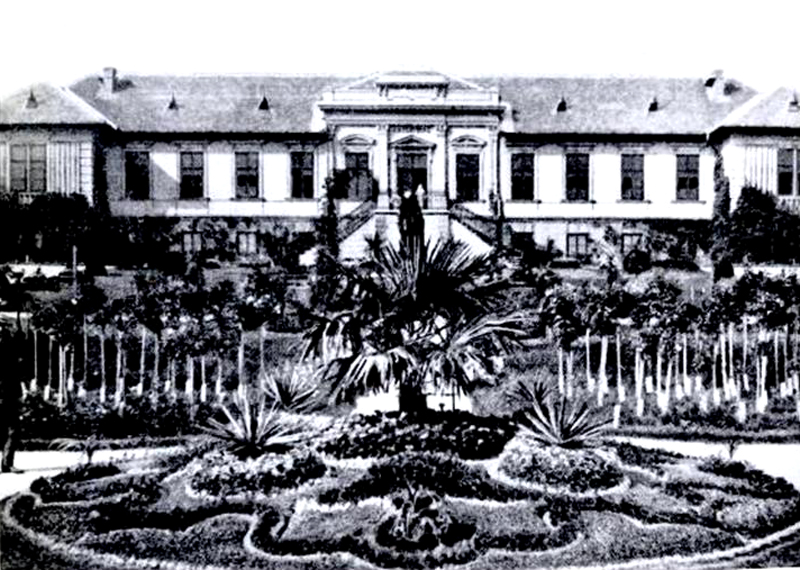
The Central Park in the early 1900s
In an open area in front of the headquarters building, a carefully maintained ornamental space was created, initially in a baroque style, with richly decorated flowerbeds, carpet beds and a water basin, planted with special plants.
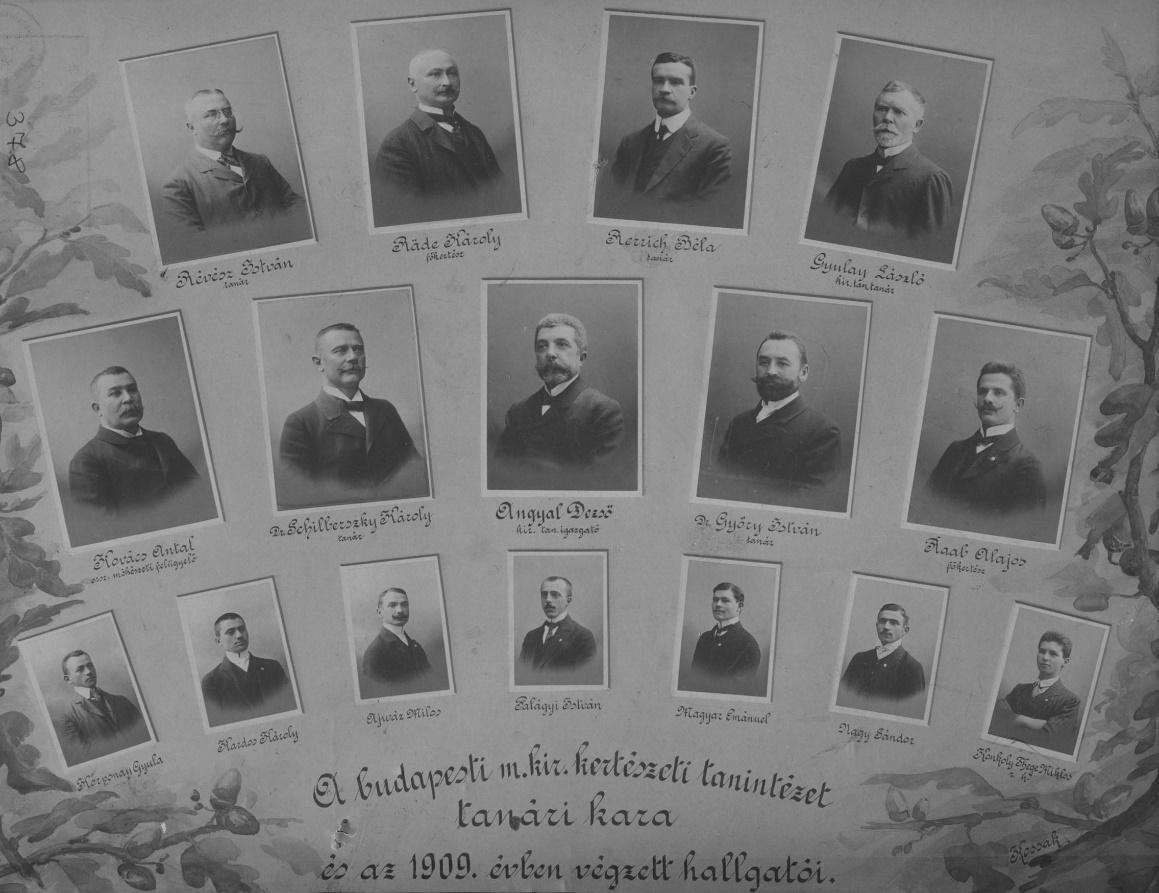
Tableau of the Royal Hungarian Horticultural Institute in Budapest (1909)
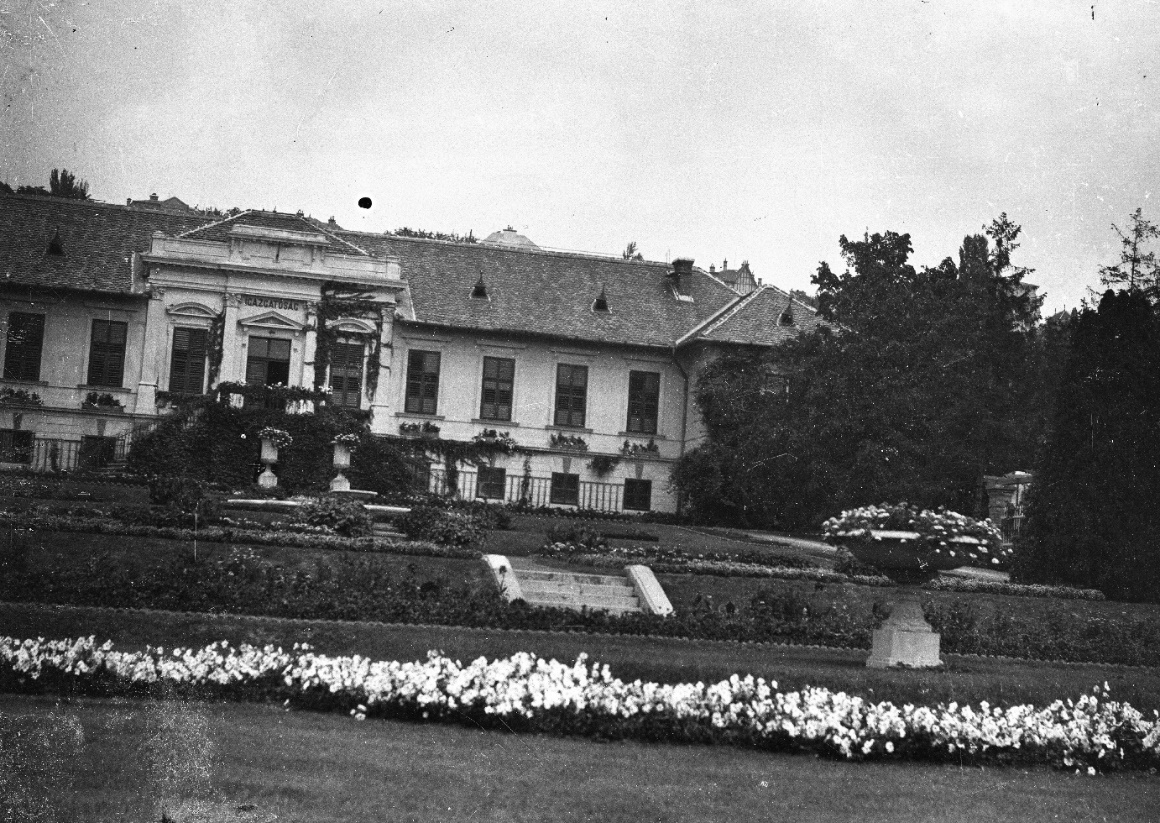
The directorate building of the Royal Hungarian Horticultural Institute, Ménesi street (Nagyboldogasszony streer) 45, 1930. Source: Fortepan / Zsuzsa Zsohár
The 45-year period of the Royal Hungarian Institute of Horticulture was the longest period in the history of the institution without any organisational changes. During this period, which was marked by the directors Dezső Angyal, Béla Rerrich, János Horn, Béla Dezsényi and Mátyás Mohácsy, education was divided into three main areas: the production of horticultural products suitable for fresh consumption, the industrial preservation and processing of produce, and the creation of a beautiful environment, all of which were covered in theory and practice.
At the end of the 1920s, the arboretum was extended by another ¾ hectare, the plans for which were drawn up by Béla Rerrich, a renowned architect and garden designer of the time, and the construction work was supervised by Gyula Magyar, the dendrologist of the school. The collection of plants grew considerably and by then included nearly 1 400 species and varieties, although many of the more delicate pines and evergreens had fallen victim to winter colds or summer drought, and by the 1950s the plant collection had been reduced to 800 taxa.
At this time, the central building of the Buda Campus, Building 'K', was occupied by greenhouses designed by the Institute's head gardener, Károly Räde. He taught ornamental horticulture and ornamental gardening until 1913, after which he became the Chief Gardener of Budapest. The greenhouses were heated by the Boiler House (1926) designed by Béla Rerrich. Other legendary teachers from this period include István Győry, a pharmacist who taught chemistry and physics, and Károly Schilberszky, who taught plant pathogens and pests, as well as horticultural terminology in foreign languages. Mátyás Mohácsy, the director, after a decade of experience abroad and with a knowledge of three world languages, started to develop the institution in 1930. Under his leadership, in 1939, the Institute became an academy, i.e. a higher education institution with the qualification of "certified gardener". It was at this time that the departments were established, and after only four years the name changed again: the Royal Hungarian College of Horticulture and Viticulture now offered a four-year course.
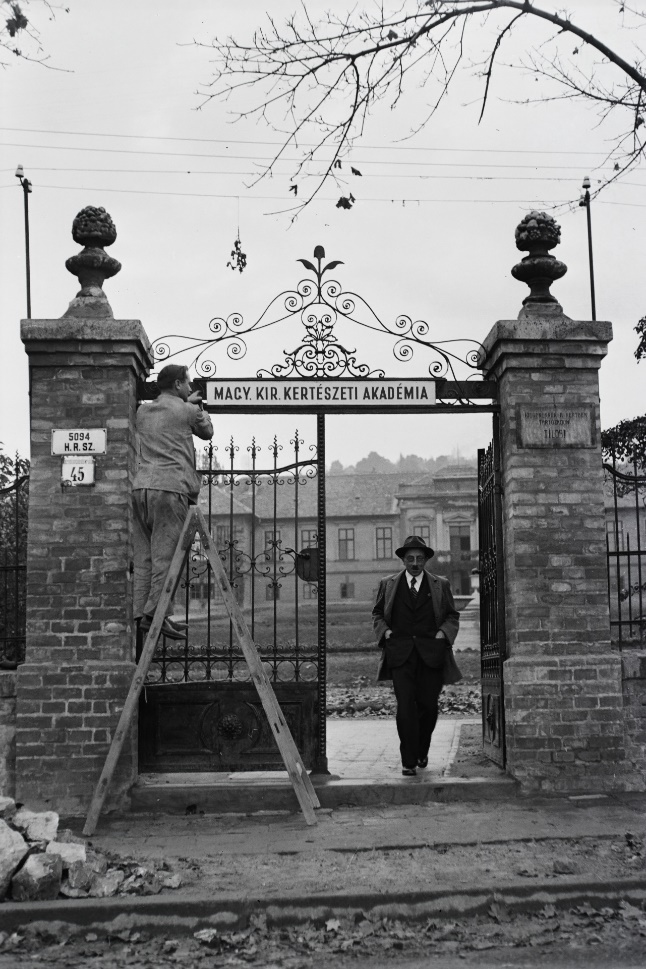
Inscription of the Royal Hungarian Academy of Horticulture, Ménesi út (Nagyboldogasszony útja) 45, 1939. Source: Fortepan / Imre Ormos Foundation
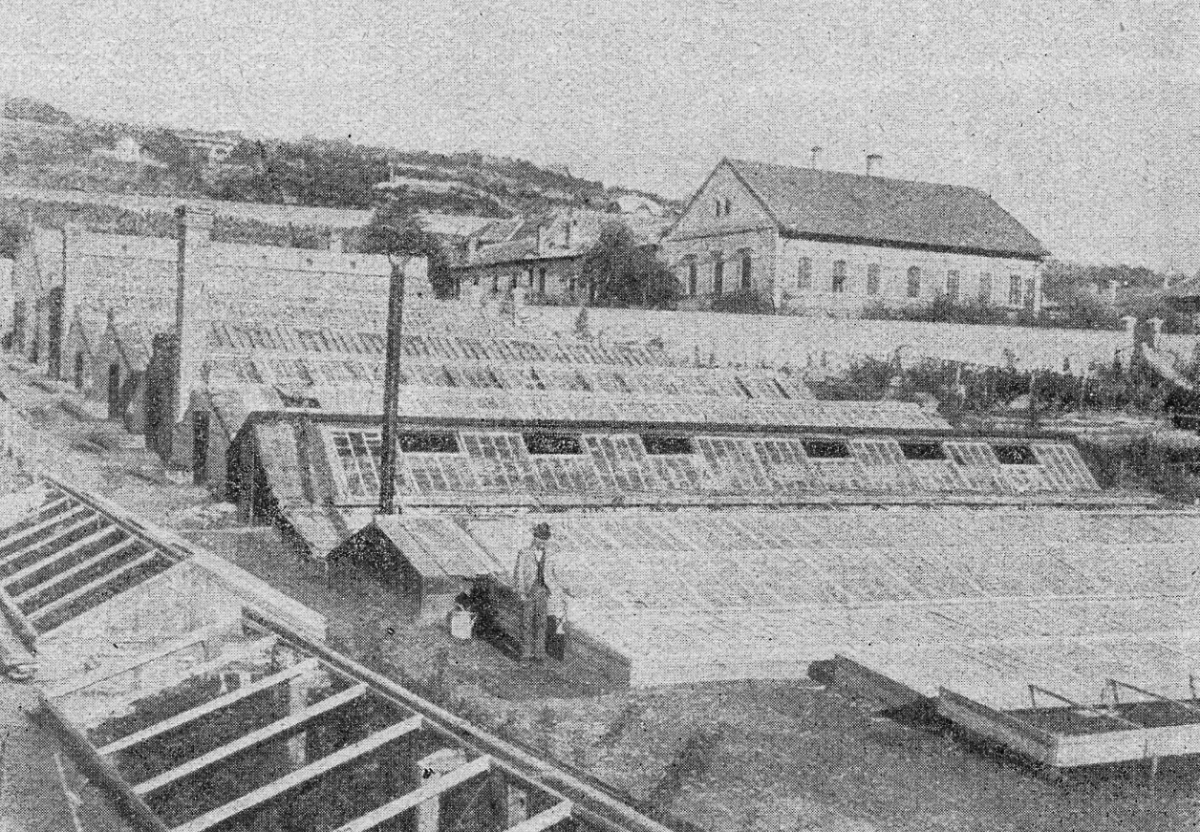
The glasshouse that once stood on the site of today's Lower Garden in the early 1900s
(Source: Győző Buchta and colleagues, 1919.)
The Second World War caused serious damage to the plant material of the Buda Arboretum: the area was hit by several bombing raids and was the scene of heavy fighting during the siege of Budapest. The plants were also damaged by bullets and shrapnel, and the trunks of older trees still harbour shrapnel. Unfortunately, the bombing raids that started in 1944 did not spare the glasshouses either: by the end of the war, practically all of them were unusable. The valuable collections of educational plants were destroyed, along with the orchid collection, which consisted of hundreds of specimens. In order to restart, the stock of horticultural glassware was carried by hand from the lower site to the shelter of the upper site - when no shelling was taking place. In February 1945, the saved glass was used to repair the hotbed frames. Vegetables were first sown in the hotbeds and the seedlings raised were distributed to the surrounding population.
In 1945, the buildings of the Notre Dame de Sion Sisters' Elizabeth Girls' Orphanage, built in 1909 on Villányi Street, were handed over to the Royal Hungarian College of Horticulture and Viticulture (now buildings 'C' and 'G' of the Buda Campus). In the same year, the Hungarian Agricultural University was established, to which the college was affiliated as the Faculty of Horticulture and Viticulture. Within the framework of the university, it was now possible to obtain a doctorate degree.
The post-war renovation of the Buda Arboretum, which began in 1949, was primarily the work of Mihály Nádasi. Dead or over-aged and damaged plants were gradually replaced by new ones, and new species were added to the garden. In 1963, new irrigation equipment was installed, which also allowed more demanding plants to be kept more safely. The rockery was rebuilt and extended, increasing the number of ornamental perennials.
Building A, designed by László Lauber and Jenő Szendrői, was completed in 1950. This public building, which is under the protection of the capital, is one of the finest examples of Bauhaus modernism, and is unique in that the block, which appears to be one, is actually two buildings standing side by side. This solution was necessary to prevent the building from cracking if one of its sides were to sink into the marble bedrock. Subsequently, the Faculty was given substantial tracts of land in Soroksár and Szigetcsép to set up teaching facilities for practical training. The university administration partially relocated the Faculty from its site in Gellért Hill, and the Dean, János Horn, resigned in protest.
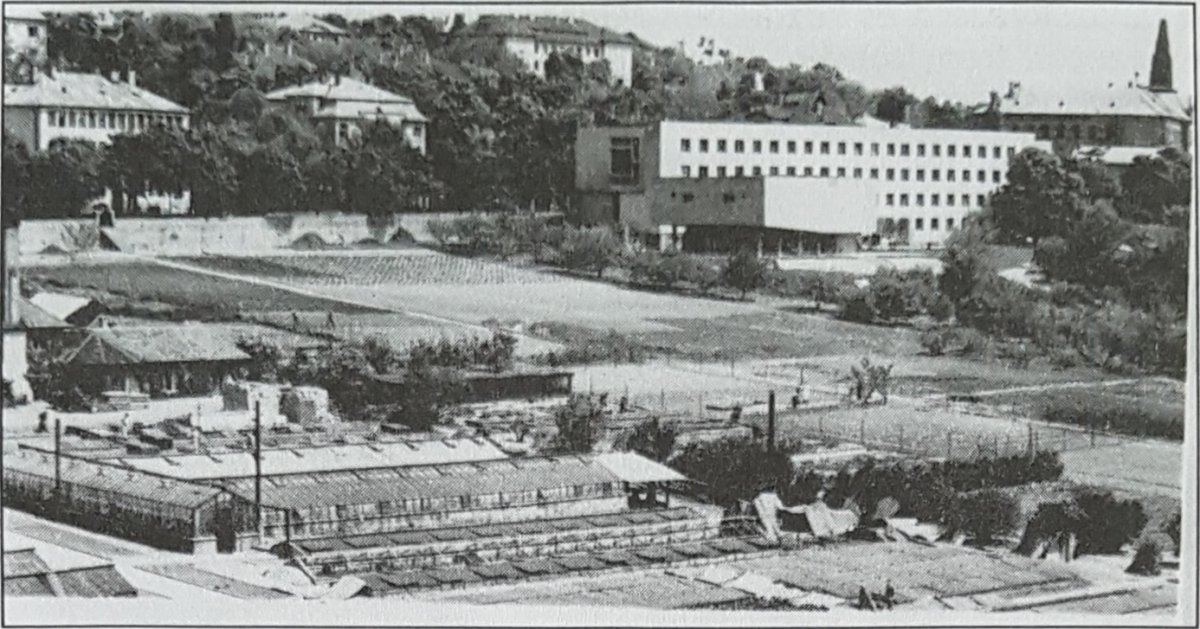
The newly constructed building 'A'. 150 years of education in horticulture, food science and landscape architecture. Faculty of Horticulture, Faculty of Food Science and Faculty of Landscape Architecture, Conservation and Development, Budapest, 2003.
The faculty eventually split off from the Hungarian University of Agricultural Sciences, and in 1953 the College of Horticulture and Viticulture was established as a university, but now independent. Its first director was Endre Probocskai, a lecturer in nursery science, who was followed by Iván Okályi and Imre Ormos. At this time, in 1962, the first Lippay János Scientific Meeting was held, the name of which was changed to Lippay János - Ormos Imre - Vas Károly Scientific Meeting in 2003. The biennial conference series has become the most important forum for the presentation of domestic research in the fields of horticulture, food science and landscape architecture.
Following the demolition of the glasshouse, the Lower Garden was established in the arboretum over several periods. The oldest area is the part between buildings A and G, which was planted in the late 1950s and early 1960s to the design of Imre Ormos. The Lower Rock Garden and the collections of the Hungarian selections: the linden and berkenye collections were established in this area.
In 1968, the college was upgraded to university status and the University of Horticulture was founded, which became, in the words of its rector Pál Kozma, "the world's first independent university of horticulture, independent of any other university". The training period was five years, after which it was possible to obtain the qualification of qualified engineer, or, after a three-year course, plant engineer in the conservation industry. After the demolition of the Buda Experimental Station, the foundation stone of the new central building (now Building K) was laid in a ceremony on 27 May 1968. The building houses large lecture halls, classrooms and a canteen. The beautiful mosaic on the wall of the Ceremonial Hall is the work of Gyula Hincz (1904-1986), a Kossuth and Munkácsy Prize-winning painter and graphic artist. Between 1971 and 1991, the University of Horticulture Club (KEK) was based here, and its concerts and other events played a key role in the cultural life of the time.
The arboretum was further expanded after the opening of the 'K' building: the area around the new building was planted, and from 1974 the garden was again expanded: the westernmost, youngest part along Szüret Street was planted with ornamental plants. In the Lower Garden, plants were no longer grouped according to taxonomic principles, but according to the environmental requirements of the species, and the planting remained landscape-oriented.
In the 1970s, the first building of the school, Building E, was extended. The 'E' building complex, built on the northern boundary of the Upper Garden, was opened in 1972 and houses the dormitory, dining hall and gymnasium. The former dining hall is now the site of the library. In the same year, the Faculty of Preservation, the predecessor of today's Institute of Food Science and Technology, was founded. Four years later, under the rectorship of Imre Dimény, the University took over the administration of the convent of the Sisters of Mercy (today's 'L' building), which housed the organisational units of the Faculty of Food Science.
In 1974, Gábor Schmidt took over the management of the Buda Arboretum, and under his leadership the woody plant collection of the garden was expanded by about 800 taxa by 2011. In the Upper Garden, a bulb collection of 100 daffodil and 100 tulip species was established to mark the 100th anniversary of the Arboretum. In 1994, a lower greenhouse was built to house the tropical-subtropical collection, and in 1997 the garden pond was added. The Buda Arboretum was declared a nature reserve on 5 March 1975.
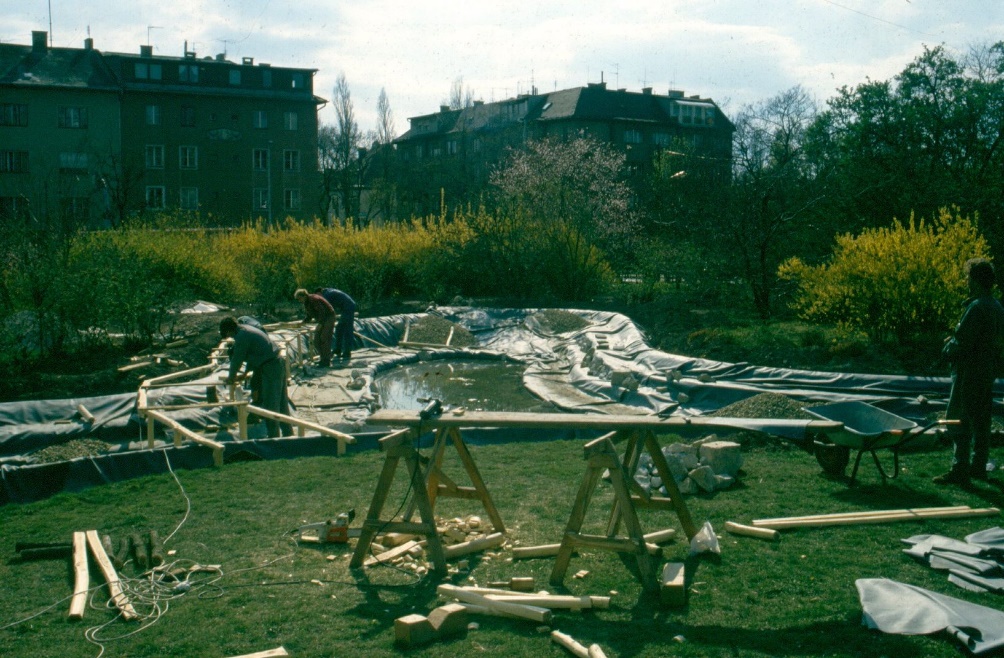
Building the garden pond in the Lower Garden (Photo: Gábor Schmidt, 1997)
In 1986 the name of the institution was changed to the University of Horticulture and Food Industry (KÉE), and after the regime change Mihály Mőcsényi was appointed Rector. On his initiative, the Faculty of Landscape Architecture, Conservation and Development was established in 1992. Rector Mihály Mőcsényi was the spiritual heir of the legendary former leaders of the institution. In his recollection of Mátyás Mohácsi, he says: "On this occasion he turned the conversation to the arboretum of our institute, saying that the many hectares of land along Ménesi út, which had become the centre of the city, were worth billions, and that many people would be very worried about it. Our one hundred and fifty-year-old institute was born here, became a national commitment here, and will continue to have a significant mission as long as it remains at its cradle. And then, without any transition, it cried out: 'Swear to protect the Buda colony and the arboretum for as long as you live!'
At the turn of the millennium, as part of the integration of higher education, the KÉE was attached to Szent István University. Unfortunately, less than a year later, the issue of moving out of the Buda area was once again at the centre of attention, and the teachers and students protested in every possible way. Finally, in 2003, the Buda faculties were transferred to the Budapest University of Economics and Public Administration, with which they jointly formed the Corvinus University of Budapest.
In 2008, the largest lecture hall on campus, Room A1, was completely renovated, and in 2010, after the modernisation and renovation of the Szüret Street dormitory and canteen building, the Entz Ferenc Library and Archives moved into the renovated building and the dormitory students were able to move into new rooms. This was followed by the renovation of the classroom wing of Building K, where new classrooms were built to replace the empty library rooms.
Between the summer of 2010 and spring 2012, the Buda Arboretum underwent extensive, complex improvements with the support of the European Union. Investments have included the control of invasive species, the reinforcement of the retaining wall on Ménesi Road, the renovation and modernisation of the greenhouse housing the tropical-subtropical collection, the extension and renovation of the pergolas and of habitats such as the garden pond and the rock gardens. A model irrigation system with rainwater harvesting has been installed and a reconstruction of the historic garden of the Ornamental Square has been completed, based on photographs and plans from the past. The plant collections of the Buda Arboretum have also been renovated and 300 more taxa added.
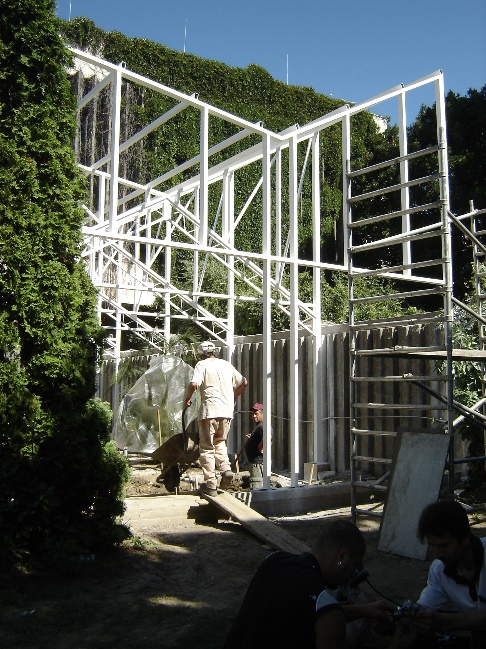
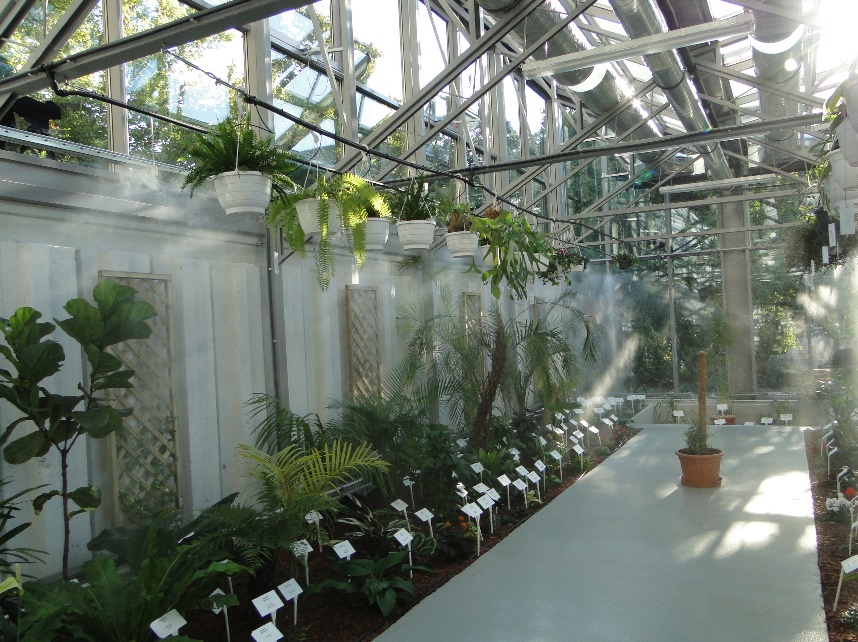
Conversion and modernization of the tropical-subtropical greenhouse (Photo: Péter Honfi, 2011)
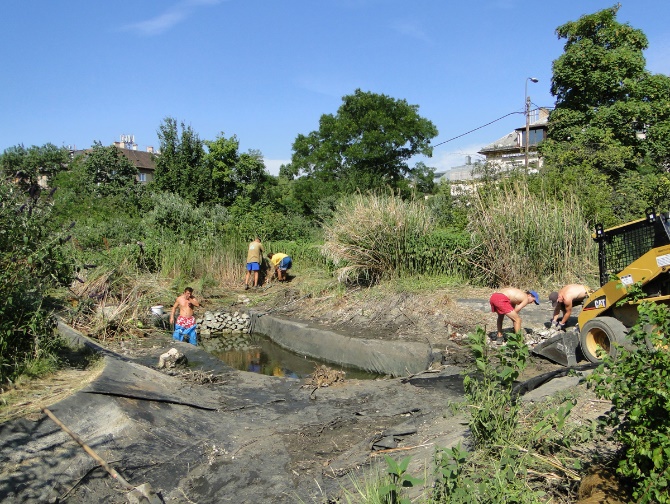
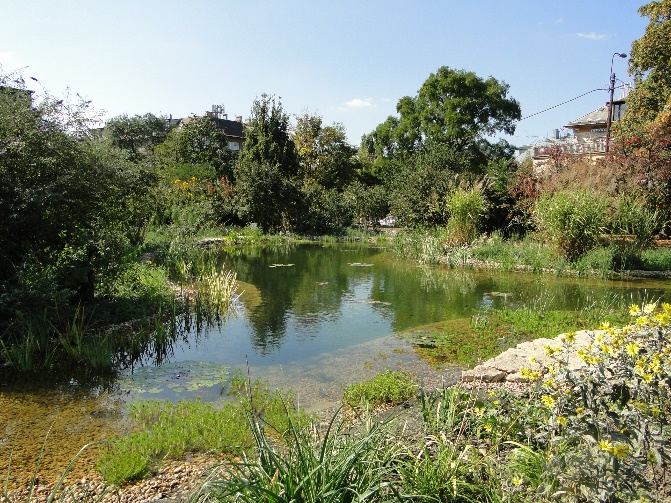
Extension and renovation of the garden pond (Photo: Péter Honfi, 2011)
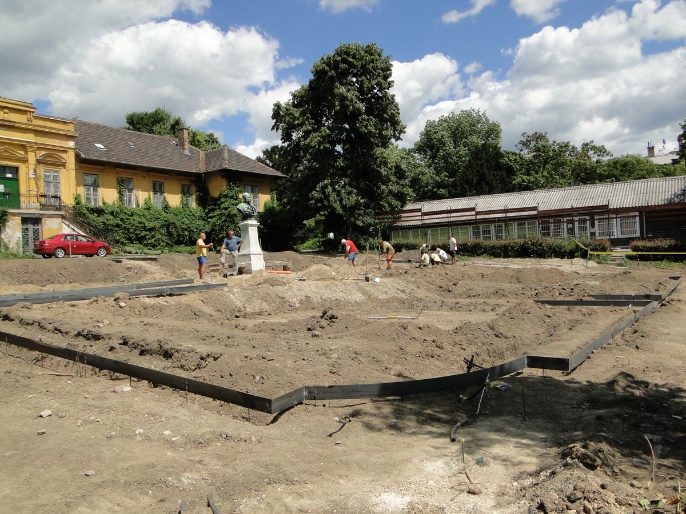
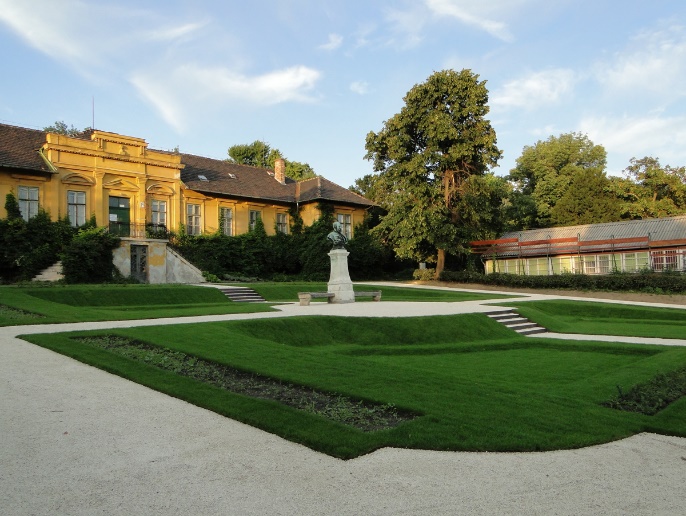
The historical garden reconstruction of the Dísztér (photo: Péter Honfi, 2011)
Also between 2010 and 2012, within the framework of a TÁMOP project aimed at increasing the research, development and innovation performance of Corvinus University of Budapest and the establishment of five interdisciplinary centres of excellence, significant improvements were made in the research laboratories of the campus: not only the infrastructural conditions were improved enormously, but also several new instruments (HPLC-ESI-QTOF, laser confocal microscope, real-time PCR) were purchased, which are essential for state-of-the-art technology.
After thirteen years, the decision of the maintainer to transfer three faculties of the campus back to Szent István University was taken. In 2017, the 'K' building's Ceremonial Hall and its furnishings were renewed, and in summer 2020, more than 10 new, smaller, modern classrooms were built to accommodate the Budapest courses of the Faculty of Business Administration on the Buda Campus. From 1 February 2021, the three faculties, which have evolved organically over the course of their history, will become part of the Hungarian University of Agricultural and Life Sciences and, following organisational changes, will continue to operate as institutes.
In addition to its educational and nature conservation functions, the Buda Arboretum is also a memorial garden of outstanding figures of Hungarian horticulture, food science and landscape architecture. Its sculpture park contains 12 statues (Máté Bereczki, Ferenc Entz, István Győry, János Lippay, Gyula Magyar, János Mathiász, Mátyás Mohácsy, Mihály Mőcsényi, Imre Ormos, Endre Probocskai, Imre Somogyi and Károly Vas), There are four memorial plaques (KEK, Árpád Jeszenszky, Agricultural Society, Pro Patria Heroes of the Dead 1914-1917) and two mural murals (by László Paizs and Gyula Hincz) in the buildings. Recognising the arboretum's significance as a monument and horticultural site, the Ministry of National Cultural Heritage declared the entire area a category I monument in 2005.
The Buda Campus has a long tradition of sports (KEAC), and the Kertész Dance Association has gained national recognition. The Entz Ferenc Library is a rich repository of national and international literature on the disciplines taught, and our Archives preserve the institution's highly valuable historical documents. To mark the 210th anniversary of the birth of Ferenc Entz, we have launched the Entz Day series of events, which includes prestigious lectures, exhibitions and professional meetings every year. The location of the Buda Campus, its traditions, its unrivalled genetic treasures, its buildings and works of art are of great national value and offer outstanding opportunities for students at the University.
Attila Hegedüs, PhD and Péter Honfi, PhD
Forrásművek:
150 év a kertészettudományi, élelmiszertudományi és tájépítészeti oktatás szolgálatában. BKÁE Kertészettudományi Kar, Élelmiszer-tudományi Kar és Tájépítészeti, -védelmi és -fejlesztési Kar, Budapest, 2003.
Angyal D. Gyümölcstermesztés. Pátria, Budapest, 1925.
Buchta Győző, Horn János, Schilberszky Károly, Szász Nándor (szerk.): A Budapesti Állami Kertészeti Tanintézet évkönyve – működésének első huszonöt évéről 1894-1919. Budapest, Budapesti Állami Kertészeti Tanintézet. 1919.
Gedai G. Entz Ferenc. Akadémiai Kiadó, Budapest, 1980.
Gedai G. Válogatott fejezetek Entz Ferenc Kertészeti füzetek c. művéből. Magánkiadás, Budapest, 1978.
Horváth M. Majdnem-Bauhaus a Gellérthegyen: A volt Kertészeti Egyetem ’A’ épülete. Octogon Architecture & Design, Budapest, 2019.
http://www.muemlekem.hu/muemlek/show/11580
Mőcsényi M. (2012): Mentorom, nesztorom – Mőcsényi esszék 5. https://epiteszforum.hu/mentorom-nesztorom-mocsenyi-esszek-5
Osváth Zs. (2014): Másfél évszázada a Gellérthegy déli lejtőjén. Az épített örökség tudományterületi tudathordozó funkciója a Budapesti Corvinus Egyetem Budai Campusán. Per Aspera ad Astra, 1: 92-116.

